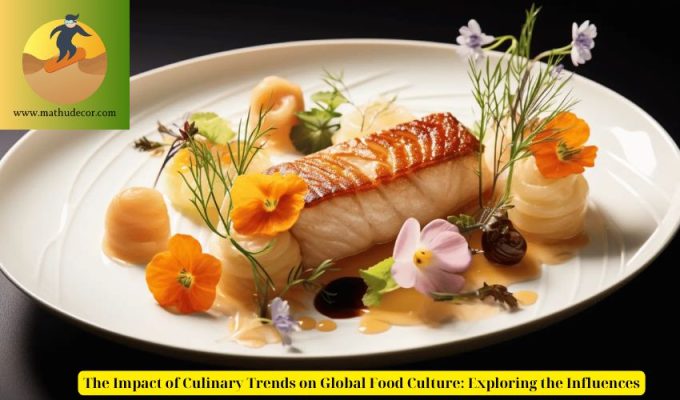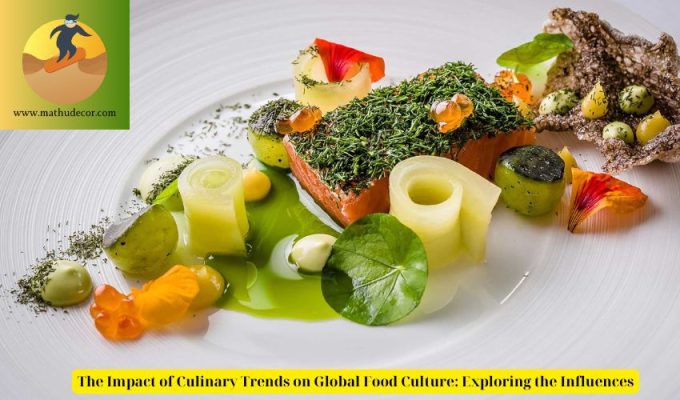
Discover the key culinary trends shaping global food culture and explore their impacts on diverse cuisines and dining habits worldwide.
The Rise of Fusion Cuisine
Global Influence
Fusion cuisine has been on the rise in recent years, blending flavors and techniques from different culinary traditions to create innovative and exciting dishes. This trend has been fueled by the increasing globalization of food and the growing interest in exploring new and diverse flavors. Chefs around the world are drawing inspiration from a wide range of cultures, resulting in a fusion of ingredients and cooking styles that reflect the interconnectedness of our modern world.
Creative Combinations
One of the most exciting aspects of fusion cuisine is the endless possibilities for creative combinations. Whether it’s Japanese-Peruvian fusion or Indian-Mexican fusion, chefs are pushing the boundaries of traditional recipes to create unique and delicious dishes. This approach not only offers a fresh and dynamic dining experience for customers, but it also celebrates the rich tapestry of culinary traditions from around the globe. From sushi burritos to kimchi quesadillas, fusion cuisine is redefining the way we think about food and challenging our taste buds in the best possible way.
Adaptation and Evolution
Fusion cuisine is not just about mixing and matching ingredients; it’s also about adaptation and evolution. As different culinary traditions come together, they influence and enrich each other, leading to the creation of entirely new food identities. This constant evolution keeps the culinary world vibrant and dynamic, offering endless opportunities for exploration and discovery. As fusion cuisine continues to rise in popularity, we can expect to see even more exciting and boundary-pushing dishes that reflect the ever-changing landscape of global food culture.
The Influence of Social Media and Food Bloggers
Social media and food bloggers have a significant impact on the way people perceive and consume food. With the rise of platforms like Instagram, Facebook, and YouTube, individuals are constantly bombarded with visually appealing images and videos of mouth-watering dishes. This exposure has led to a shift in consumer behavior, as people are now more inclined to try new foods and visit trendy restaurants that they discover through social media and food bloggers.
Impact on Consumer Choices
The influence of social media and food bloggers extends beyond simply showcasing delicious meals. These platforms also play a crucial role in shaping consumer choices and preferences. Many individuals turn to social media for recommendations on where to dine, what to order, and even how to cook. As a result, food bloggers and influencers have become powerful tastemakers, capable of driving foot traffic to restaurants and influencing purchasing decisions.
Shift in Marketing Strategies
The rise of social media and food bloggers has forced the food industry to adapt its marketing strategies. Traditional advertising methods are no longer as effective as they once were, as consumers now place greater trust in authentic, user-generated content. As a result, many restaurants and food brands are partnering with influencers to promote their products and services. This shift in marketing tactics highlights the immense influence that social media and food bloggers have on consumer behavior and the food industry as a whole.
Sustainability and Health-Conscious Food Choices
In recent years, there has been a growing awareness of the impact of food choices on both personal health and the environment. Consumers are increasingly seeking out sustainable and health-conscious options when it comes to their diet. This trend is driven by concerns about the environmental impact of food production, as well as a desire to make healthier choices for themselves and their families.
Environmental Impact
One of the key factors driving the shift towards sustainability in food choices is the recognition of the environmental impact of traditional food production methods. From deforestation for agriculture to the carbon emissions associated with animal farming, there is a growing understanding of the need to make more sustainable choices. As a result, consumers are seeking out foods that are produced in ways that minimize their impact on the planet, such as organic and locally-sourced options.
Health Benefits
In addition to concerns about the environment, many consumers are also motivated by a desire to make healthier choices for themselves and their families. This includes a focus on whole, unprocessed foods, as well as an emphasis on plant-based options. By choosing foods that are high in nutrients and free from harmful additives, consumers are able to prioritize their health and well-being through their food choices.
In conclusion, various culinary trends such as plant-based diets, sustainability, fusion cuisine, and global flavors are shaping the global food culture. These trends are influencing the way people eat and cook around the world, leading to a more diverse and innovative culinary landscape.



Leave a Reply